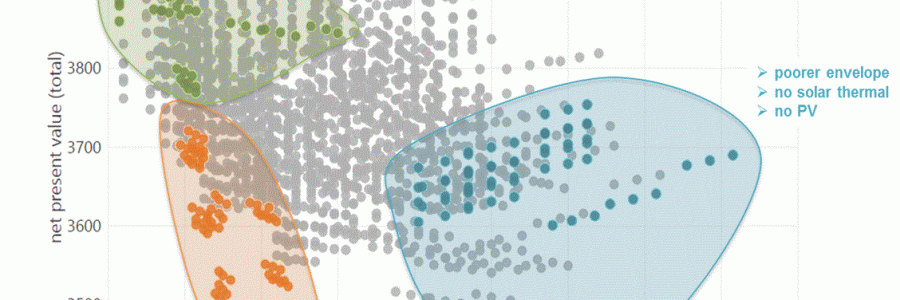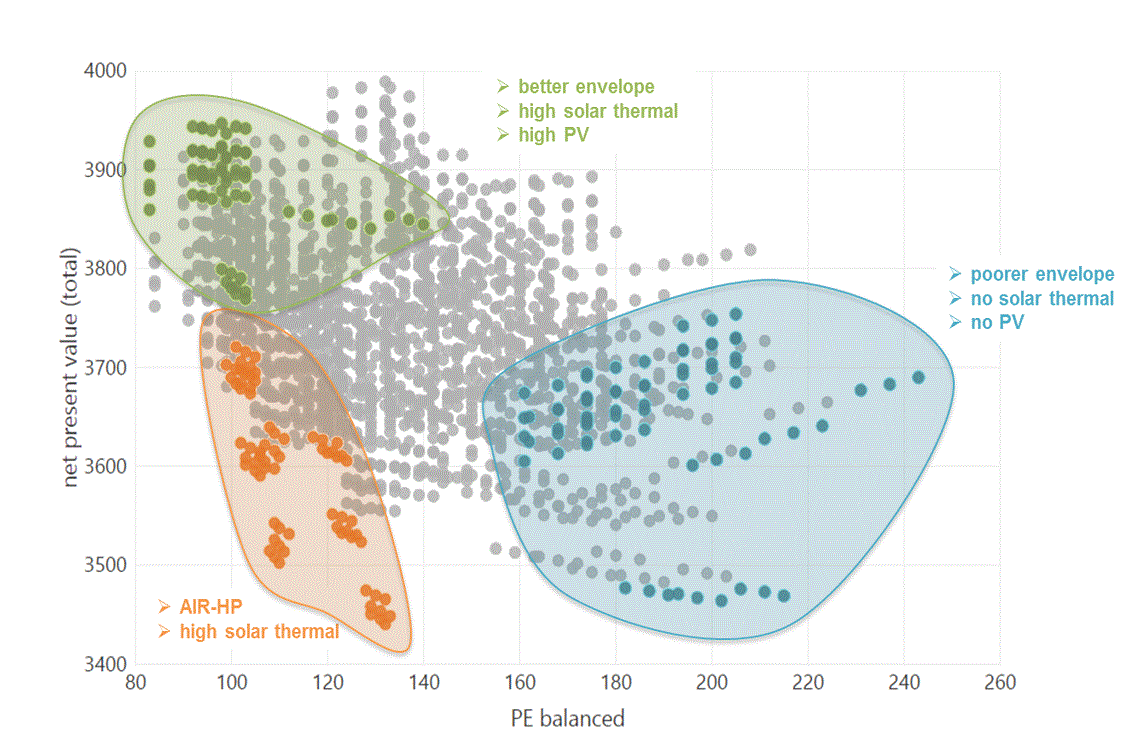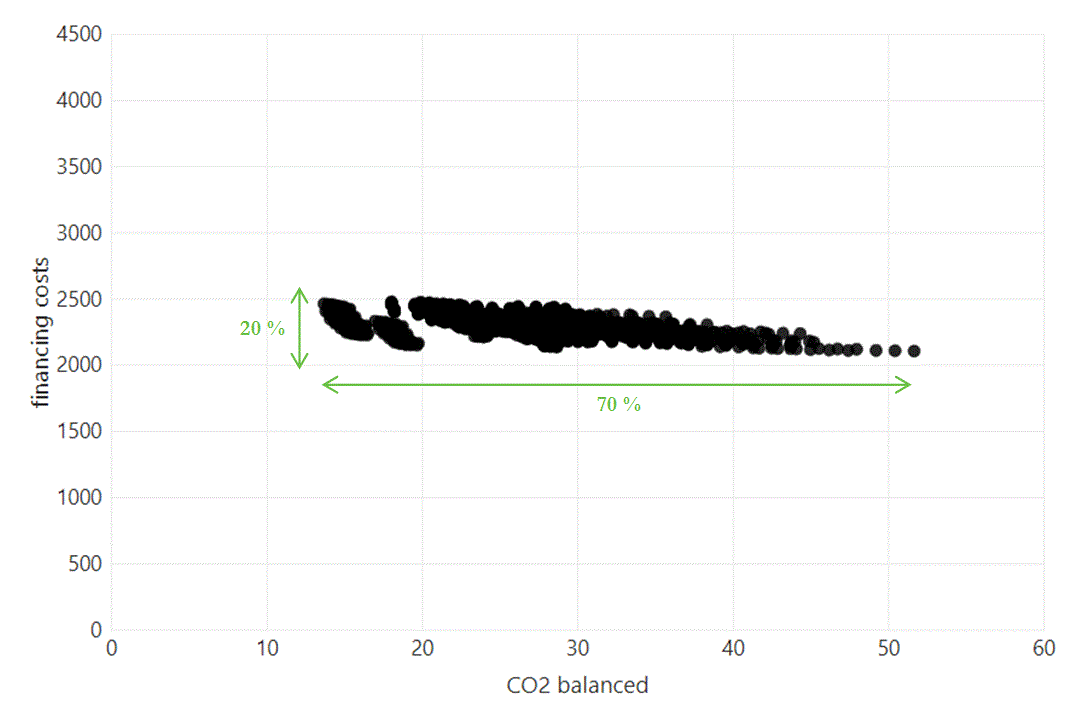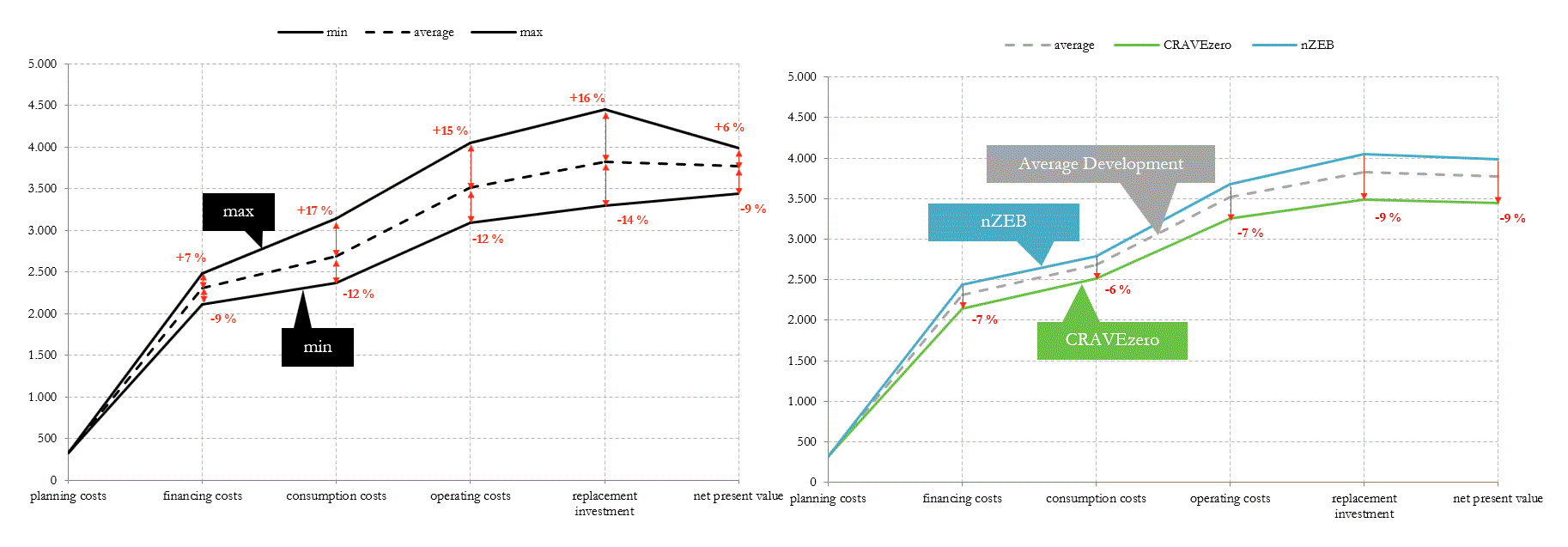
Parametric models for buildings
Download the full report here:

Figure1: Analysis of the balanced primary energy demand related to the net present value for the different technology combinations for case study Solallen.
Already today buildings can be realised in the nearly zero and plus energy standard. These buildings achieve extremely low energy demands and low CO2 emissions and can be operated economically. For this reason, the motivation in the CRAVEzero project is not only based on the energy characteristics of buildings, but also on their life-cycle costs. However, the broad market deployment of these buildings is progressing very slowly so far, as methods and processes for the cost-optimal integration of efficiency measures and renewable energies are not yet sufficiently described and therefore not yet common. As a consequence – many poorly planned buildings are criticised for the fact that the actual energy consumption of highly efficient buildings is higher than the predicted demand and that high-efficiency standards are expensive and uneconomical. The influence of the user behaviour of such energy efficient buildings is another aspect, which has to be considered to evaluate the impact on the energy consumption of the building.
The identification of suitable methods for the energetic-economic optimisation of highly efficient buildings in all life-cycle phases is a prerequisite for the broad market implementation.
On the basis of the results, the statement is confirmed: nZEBs are economical. It can now be shown that the additional costs of efficiency measures are so low that highly efficient buildings have the lowest life-cycle costs. nZEB measures only have a small percentage influence on construction costs, but can reduce CO2 emissions many times over. When considered over the service life, these measures are usually cost-neutral or even economical as can be seen in Figure 2.

Figure2: net present value (€/m²) relation to the balanced CO2 emissions (kgCO2/(m²a)) of all variants of the case study Solallén
 Figure3: Cost performance (€/m²))of the case study Solallén over the whole life-cycle of the building; comparison of nZEB variant with a building according to the CRAVEzero approach
Figure3: Cost performance (€/m²))of the case study Solallén over the whole life-cycle of the building; comparison of nZEB variant with a building according to the CRAVEzero approach
The following results have been derived from the recent report :
- The energy standard has a small influence on the building and construction costs. Energy efficiency is therefore not a major cost driver in construction.
- The additional construction costs of nZEBs are compensated in the life-cycle of most technologies even without subsidies.
- The cost optimum of primary energy demand and CO2 emissions is in the range of nearly zero and passive houses. Highly insulated envelopes and highly efficient windows are usually economical even without subsidies. This is also due to the long service life of these components in comparison to HVAC systems.
- The optimum cost curve in relation to CO2 emissions is very flat. Low emissions and energy requirements can therefore be achieved with different energy concepts as long as the envelope is very efficient. This means architectural and conceptual freedom.
- It is shown that energy efficiency and economic efficiency are not contradictory strategies, but can complement each other very well.
- The parametric simulation results showed that the variance in the financing costs (20 %) and the net present value (15 %) is relatively low, whereas the primary energy demand (66 %) and the CO2 (73 %) emission vary in a broader range.
- It is possible to find a solution set with nearly equal financing cost and/or net present values, but with less primary energy consumption and/or CO2
- The sensitivity analysis showed that the interest rate and the inflation of energy costs had the highest influence on the LCC costs. Further important factors were the maintenance cost, electricity costs and the cost of the structural elements with a medium influence on the LCC costs.
- The user behaviour had a major influence on the total energy consumption of a building. A highly efficient building can at least support the user to further reduce his energy consumption.
The report describes the methodology and data used for the building simulation and parametrisation approach to quantify possible cost and energy savings of nZEBs throughout the life-cycle. Furthermore, three different methodologies are prototypically tested.
View the results in an interactive Dashboard:
Want to know more about the boundary conditions and assumptions for the dashboard? Please have a look at the full report here

